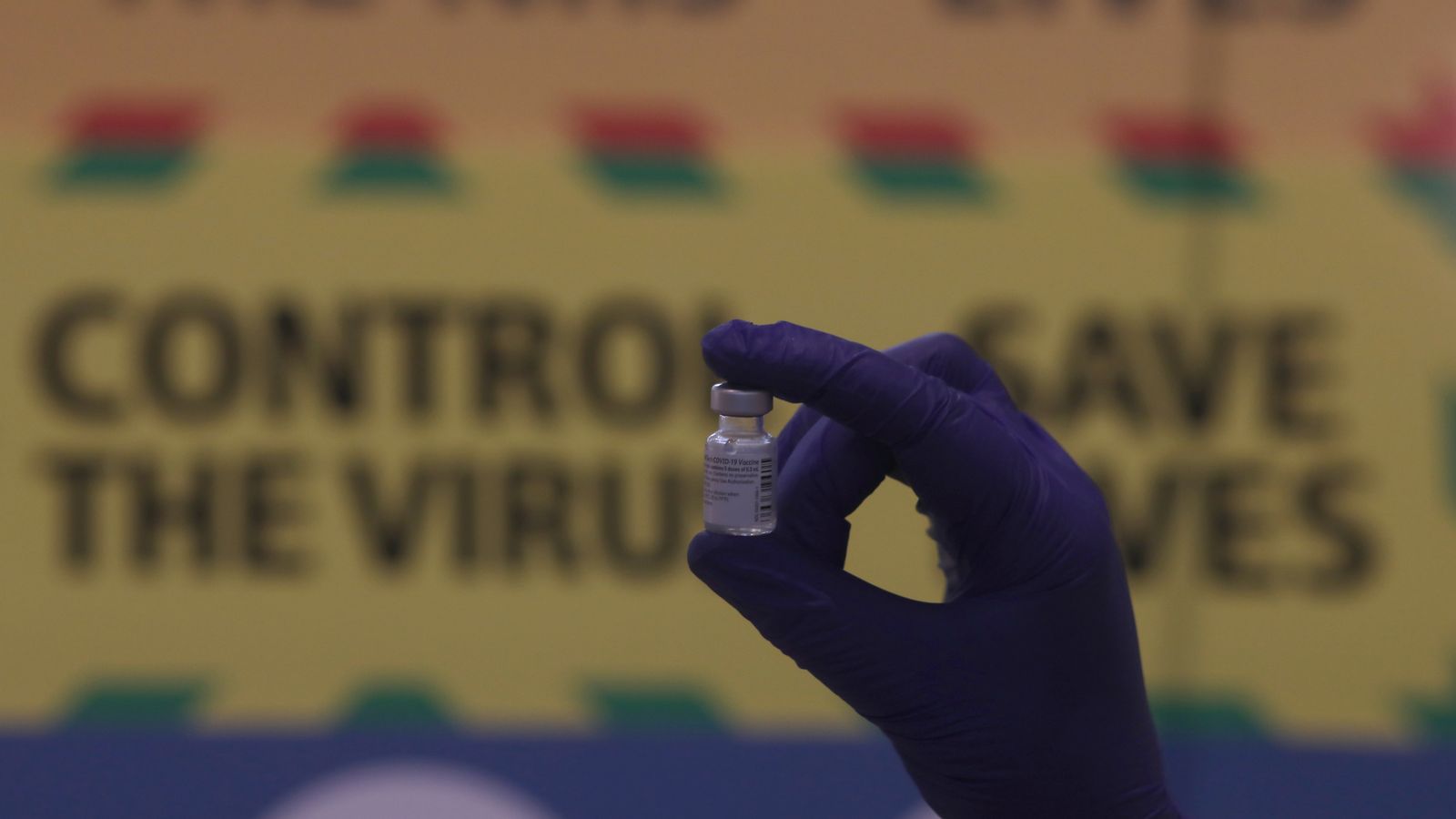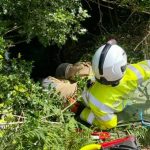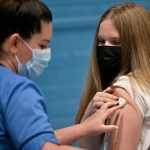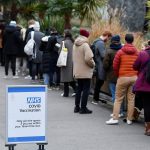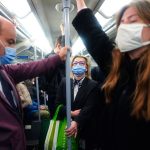A rise in COVID cases was expected as we came out of lockdown. But the Indian variant is pouring petrol on the flames.
The latest data on the government dashboard shows COVID cases and hospital admissions over the last seven days are up 20% from the previous week. Deaths are up 14%.
Some of that is due to increased social contact – more people are commuting, seeing friends and family, and going to non-essential shops.
And it’ll still be another week or so before the increased risk from indoor mixing, which was allowed on 17 May in England, shows up in the statistics.
But the Indian variant is also helping to drive up the numbers.
The latest data shows it now accounts for between half and three-quarters of all COVID cases, with the highest rate in the north west of England.
Cases confirmed by genetic analysis have doubled in a week to 6,959. It’s a chilling reminder of the rapid spread of the Kent variant in December.
Please use Chrome browser for a more accessible video player
But it’s not all bad news.
In fact, there are some very promising signs in the latest data from Public Health England.
Firstly, two doses of the vaccine are really effective.
Analysis of 5,600 cases of the Indian variant shows 60% were unvaccinated. Just 3% of them were fully vaccinated.
Of the 43 people who needed hospital admission, 67% were unvaccinated, just 2% had received both doses.
And finally, eight of the 12 people who died were unvaccinated.
All the more reason to get the jab.
The other promising sign comes from the worst hotspot of all, Bolton.
COVID cases in the town have surged since the start of May – rising rapidly from around 80 to 450 per 100,000 people.
Please use Chrome browser for a more accessible video player
But rates have levelled off, remaining at around 450 per 100,000 for the last three days.
It may just be that the hard work of public health teams to surge test and vaccinate people in the area is beginning to pay off.
Rates are still far higher than the national average of 25 cases per 100,000 people.
But if the spread of the virus can be slowed it will give the vaccine rollout more time to reach more people around the country. That will blunt any third wave.
So what does all this mean for 21 June and the lifting of the remaining lockdown rules?
It really does hang in the balance. The data could go either way.
If the virus doesn’t explode in new areas, if hospitals in the hotspots aren’t overwhelmed, if the variant proves not to be as infectious as had originally been feared, we are likely to get our summer of freedom.
There’s still lots of uncertainty, but we should have a much better idea in the next couple of weeks.
